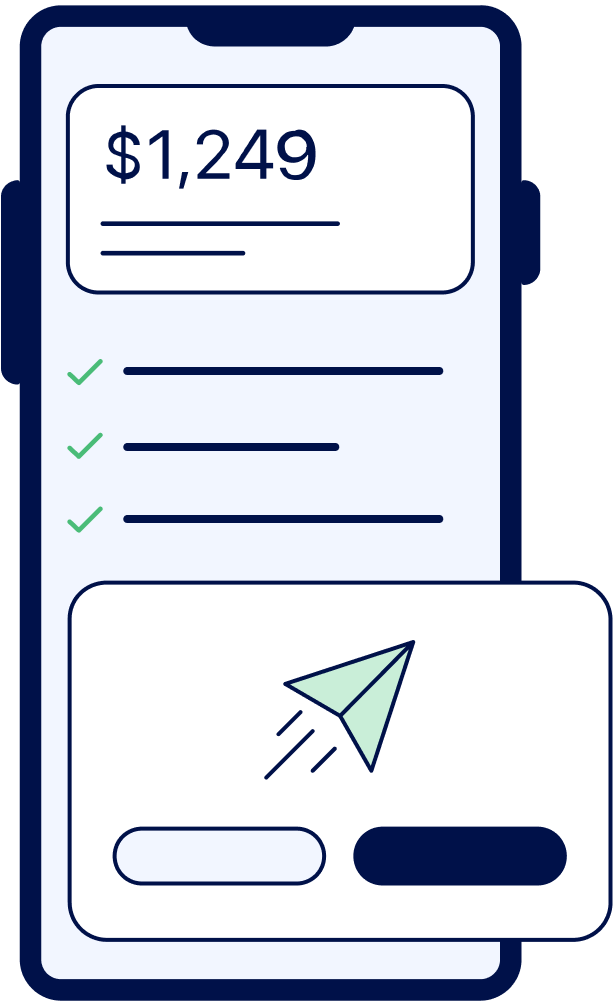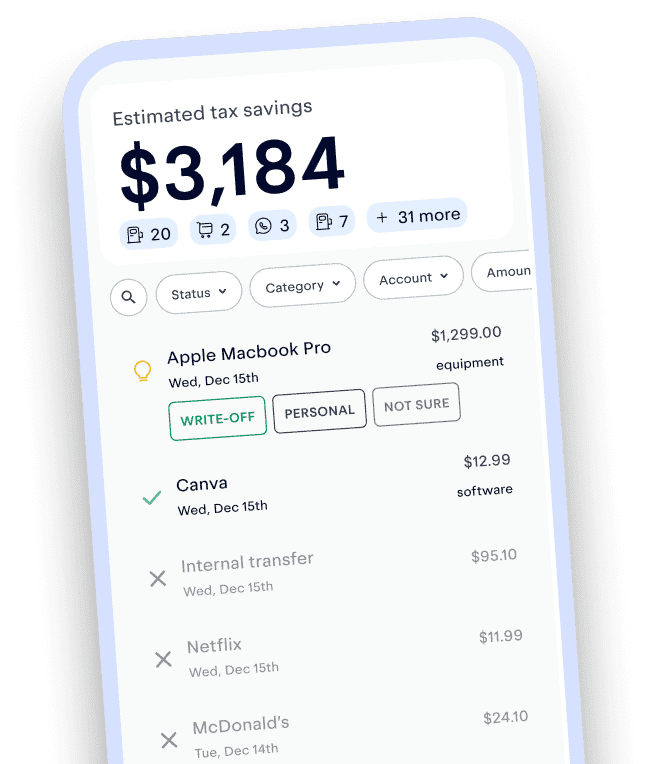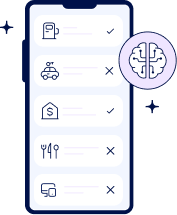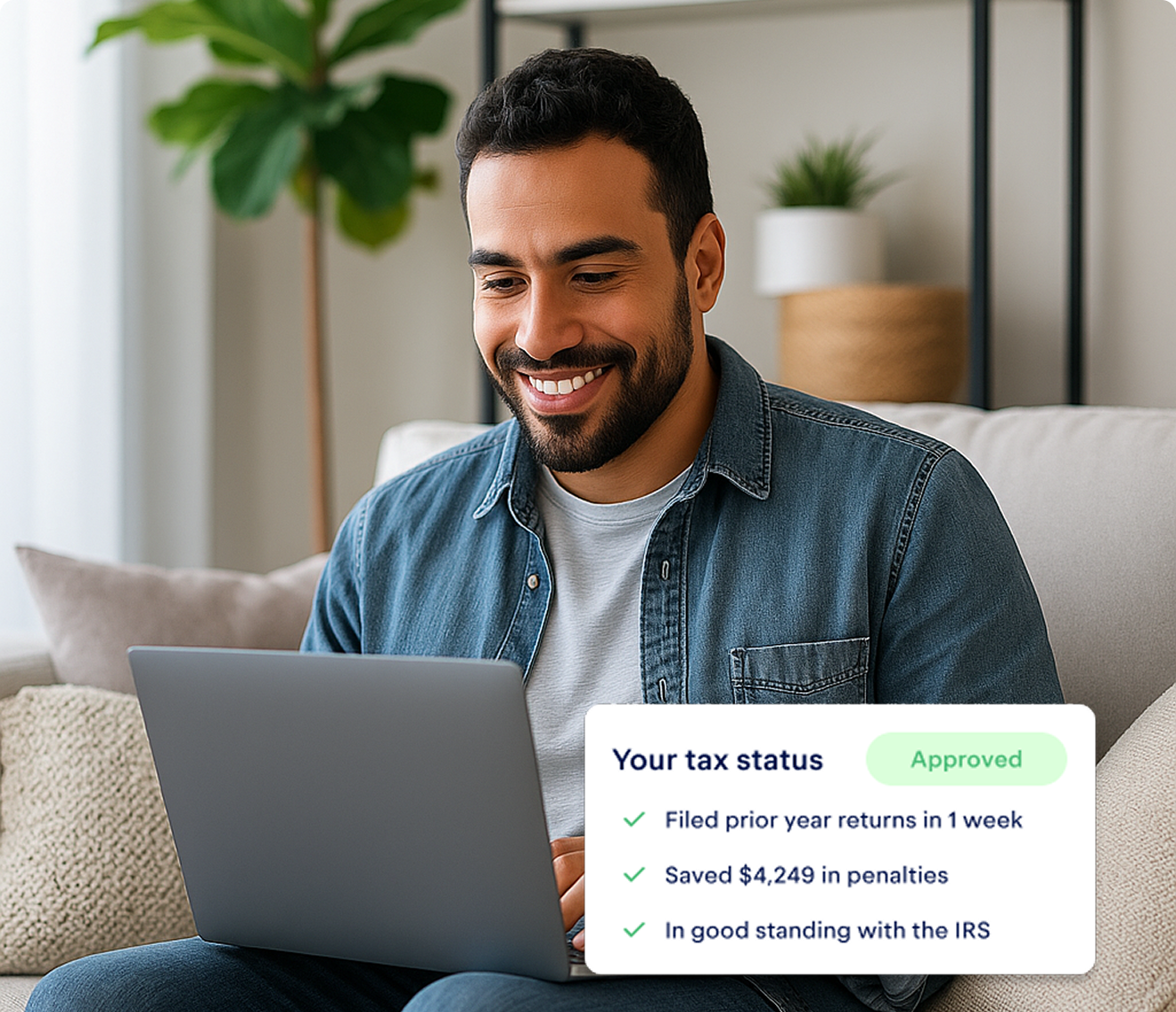

How to claim the home office deduction
Want to know whether you qualify to write off home expenses? You can take our home office deduction quiz! But as a refresher, to qualify for this deduction, you must have an at-home workstation that is your "principal place of business" — meaning you put it to "regular and exclusive use" for your work.
This home office space doesn't have to be a whole separate room, and you don't have to be there from Monday to Friday, from nine to five. A desk in your living room is fine — just as long as you don't use it for anything other than work.
Let’s consider an example. We’ll say a freelance leather artisan, Frances, works entirely in her garage. As long as she’s not using her designated workstation for recreational leathercraft, she’s in the clear to claim the deduction.
Even if you conduct some business outside your home — like visiting clients and having business meals — you're still in good shape to claim business use of your home.
Once you've determined you qualify, it's time to decide how to claim your home office write-offs. Your two options are:
- The simplified method: Based exclusively on square footage
- The regular expenses method: Based on your home office expenses and the portion of your home taken up by your office
You can't switch between the two methods over the course of a single tax year. You can, however, switch from one year to the next.
{write_off_block}
What is the simplified method for home office deductions?
This method for calculating home office write-offs is also known as the "standard" home office deduction, since you multiply your square footage by a standard rate. It's been in effect since 2013.
The standard rate used for the simplified method
With the simplified method, you get $5 for every square foot of your home office, up to $1,500.
The key here is that $1,500 cap. It means that, if your workspace is more than 300 square feet, you won't see any additional tax benefits from that extra space. So if Frances moves her leathercrafting operations from her 300-square-foot garage to a 600-square-foot warehouse on her property just for her business, her tax benefits will still max out at $1,500.
The $5 rate has held steady since this method was introduced. But it’s possible the IRS could tweak it in the future.
How to claim your home office expenses using the simplified method
You’ll use line 30 of your Schedule C, the form used to report income from a freelance business.

Keep in mind, though, that the IRS won’t let you claim a home office deduction that’s bigger than your gross self-employment income. That means a home office deduction can’t lead to a loss.
For example, if Frances’s garage is 100 square feet and she’s using the simplified method, she’d normally be allowed to deduct $500 ($100 x 5). But if it was a slow year for leather and she only earned $300 from freelancing, she couldn’t write off $500 and take a $200 loss. Her deduction would be capped at $300.
Additional tax breaks under the simplified method
Taking the simplified home office deduction means you can’t claim any other home-related business write-offs. Your home insurance, utilities, and so on are covered by the standard rate.
However, if you’re a homeowner and chose the simplified method, you can take some home-related personal deductions, like mortgage interest and real estate taxes. You’ll just have to forgo the standard deduction.
What is the regular method for home office deductions?
To calculate using the regular method, start by taking these steps:
- Add up the actual amount you spend on home expenses
- Multiply that by the percentage of your home taken up by your office space: your “business-use percentage”
The regular method in action
To return to our leathercrafting example: Say Frances works in the living room of her 800-square-foot apartment. Her workstation, and the area surrounding it, is 10 feet by 8 feet – 80 square feet in total. Her business-use percentage would be 80 square feet divided by 800 square feet – which works out to 10%.
If you use the regular method, that's the percentage you'll multiply by the total amount you spend on your actual expenses for your home.
Recordkeeping under the regular method
Historically, this method has been harder when it comes to recordkeeping. Back in the day, you had to make a tally of all your relevant expenses – forcing you to break out dedicated home office spreadsheets or keep purchase records and receipts by hand.
These days, though, apps like Keeper make it easy to automate this expense tracking, so you don't have to do anything manually. Keeper will automatically scan your purchases for home-related expenses — starting with your rent.
{upsell_block}
How to claim your home office expenses using the simplified method
You’ll use Form 8829, which lets you add up all your home expenses. Learn more about how to fill it out in the guide under our home office quiz. (Note: You can only use this form if you don’t have an S corp!)

Skip ahead if you’d like to see examples comparing the simplified and regular methods, side by side. Otherwise, keep reading to find out how the regular method can help you save money in a future tax year.
Carrying over unused home office write-offs
Like with the simplified method, you can’t claim home office expenses that add up to more than your income. However, unlike with the simplified method, you can “carry over” any leftover write-off amount to your tax turn in future years.
Back to Frances. Let’s say the regular method gives her a $700 home deduction, but her freelance income only totals $300. That’s $$00 she wouldn’t be able to write off – but it does stick around.
The following year, handcrafted belts are all the rage, and her income shoots up to $2,000, while her home office deduction only rises to $800. She writes off that year’s $800, to get $1,200. But it doesn’t stop there: she still has $400 to carry over from the previous year.
Subtract that additional $400 and you’re left with $800 — the actual amount you’ll be taxed on after bringing in $2,000. Here’s a chart so you can see all the numbers in one place:
Taking the depreciation deduction with the regular method
The regular method is the only method that lets you deduct depreciation of your home.
If you use the simplified option, you can't claim depreciation as a separate deduction. (Depreciation is built into the standard rate.)
Simplified vs. regular home office deduction: How do they compare?
The Keeper app takes away the hassle associated with the regular method and makes the simplified method less of a no-brainer, convenience-wise. But ease isn't the only factor to consider when you're weighing your options.
Most taxpayers want to know one simple thing: Which method will lead to bigger savings on their tax returns?
Based on how the two methods are calculated, you'd probably assume that, the smaller your home office and the higher your rent, the more you'd save from writing off actual expenses.
But, as it turns out, the regular method usually leads to bigger tax savings — even for self-employed people with lower housing costs and more room to work with.
Let's look at three different situations to see how the math shakes out.
{email_capture}
Example #1: Urban renter
Let’s say you rent a studio apartment in a city, paying $800 per month for rent.
On top of that, you’ve got to pay for renters insurance and all your utilities — gas, water, electric, internet, and garbage removal. All of that adds up to at least $150 per month.
In this case, you definitely shouldn’t use the simplified method. Let's take a look at why.

Our urban renter’s small at-home workstation gives them only $500 in write-offs using the simplified method. But their high expenses let them write off a whopping $1,938 if they opt for the regular method instead.
That's a $1,438 difference, just from tracking actual home expenses.
Example #2: Suburban homeowner
Let's look at another scenario where the housing costs are more affordable, relatively speaking. That's right — we're heading out to the suburbs!
Now, say you own a one-bedroom home worth $200,000 in a suburban neighborhood. You get to factor in depreciation of 3.636% per year, which comes out to $7,272.
On top of that, you’re paying for homeowners insurance and all of your utilities — costing you $120 per month (less than you’d spend in the city, even though you own).

Turns out, you still shouldn't use the simplified method.
Moving to the burbs lets you cut your actual expenses by $456.96. But that's not enough to keep the regular method from winning out.
Even in this instance, you're still getting a larger tax write-off than you'd see with the simplified method, by a comfortable margin of $981.04.
Example #3: Rural homeowner
Now, let's move even farther away from the hustle and bustle.
Your home in the countryside is less valuable, at $150,000. (At 3.636% a year, that means your annual home depreciation comes out to $5,454.) Your utilities are also even cheaper than they are in the suburbs, costing you $100 a month.
Best of all, you’ve got space to spare – enough to carve out a separate 300-square foot room in your residence just for business purposes.
Intuitively, it would make sense for the simplified method to win out in this case. But still, not quite.

By going out to the countryside, you've tripled the square footage of your home office. And so your write-off, under the standard method, has ballooned to $1,500. That’s the maximum you can get using this method.
Country living means your housing costs are pretty low, especially given the size of your house. But you still end up with a write-off of $1,663.50 using the regular method.
Turns out, the actual expenses method is still the better choice. The bottom line is that simplified method deductions have a cap, but there's no maximum for the regular method.
Which home office deduction method is right for you?
Based on these calculations, the regular method will almost always net you bigger savings at tax time.
In the past, keeping track of your home office expenses was complicated enough to send some folks to the simplified method, even if they knew they were missing out on write-offs. After all, not everyone has the time to painstakingly input data in a spreadsheet after every relevant purchase.
Luckily, the Keeper app now makes expense tracking — and tax filing — a breeze by doing all that work for you. So there's really nothing standing between you and your maximum tax savings.
{faq}
FAQ
What is the simplified method for home office deductions?
The simplified method allows you to calculate your home office expenses based on the square footage of your workspace. This might be a dedicated room in your home or a desk in your living area that you use exclusively for work.
The other option for claiming your home office expenses is the “regular expenses method.” Using this, your deduction is based on the portion of your home taken up by your office space, as well as the cost of your home expenses.
How is the simplified home office deduction calculated?
The simplified method lets you deduct $5 for every square foot of your home workspace, with a cap of $1,500. (Any home office more than 300 square feet will reach this cap.)
Let’s say you have a 50-square-foot walk-in closet you’ve converted to a working space. Using the simplified method, you’d be able to deduct $250.
Is the simplified home office deduction the best option?
When it comes to the home office deduction, you’ll often save more money using the regular expenses method rather than the simplified method.
While the simplified method may, aptly, be simpler to calculate, it doesn’t take into account a number of expenses you might incur working from home — such as your internet bill, utilities, and even cleaning products.
Luckily, forgoing the simplified method doesn’t necessarily mean complicating your taxes. If you want to go the regular expenses route, you can use Keeper that will record each time you spend on eligible tax write-offs — including home office expenses. When it's time to file, you can do so right on the app.
{/faq}

File complex taxes confidently
Upload your tax forms and Keeper will prep your return for you. 100% accuracy and maximum refund guaranteed. Plus, a tax pro reviews and signs every return.

Sign up for Tax University
Get the tax info they should have taught us in school

Expense tracking has never been easier
Keeper is the top-rated all-in-one business expense tracker, tax filing service and personal accountant.
Get started
What tax write-offs can I claim?







.png)





